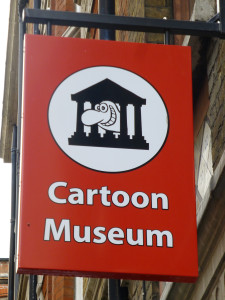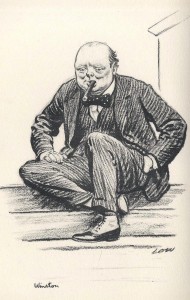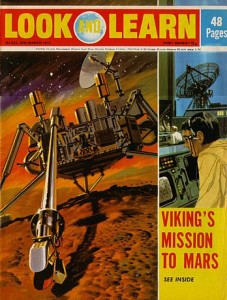 Last week I joined in with the LIKE (London Information and Knowledge Exchange) visit to the Cartoon Museum.
Last week I joined in with the LIKE (London Information and Knowledge Exchange) visit to the Cartoon Museum.
For several years I had walked past the building in Little Russell Street, just around the corner from the British Museum, on my way to work. So I was curious to see what was inside.
After a short introduction from the director and some typically ‘info-pro’ questions relating to copyright of the collection, we were free to explore the exhibits.
Downstairs I took in the permanent collection of historical works from seminal cartoonists such as Hogarth, Gillray and Cruikshank. Coming up to date with some hard-hitting images relating to the Charlie Hebdo shooting.

Next was the current featured exhibition Heckling Hitler, with cartoons and comic art from World War II. There were some classics by David Low which you can view on the British Cartoon Archive.
In addition were some famous government propaganda posters from the time, including Coughs and sneezes spread diseases, Careless Talk Costs Lives and Doctor Carrot the ‘children’s friend’.
On the way upstairs I stumbled across a short video from Simon’s Cat. This creature was a new discovery, but this example was a brilliant reminder of my own cat’s ruthless methods of getting my attention.
Upstairs was a wonderful collection of original drawings from the likes of Dennis the Menace, Dan Dare, Rupert Bear and Roy of the Rovers. Then, out of the corner of my eye I saw a familiar sight from my youth. On closer inspection it turned out to be a page from the Trigan Empire, which appeared in my childhood magazine Look and Learn. An unexpected blast from the past.

I would strongly recommend a visit to the museum if you get the opportunity.
The Cartoon Museum
35 Little Russell St
London
WC1A 2HH





















